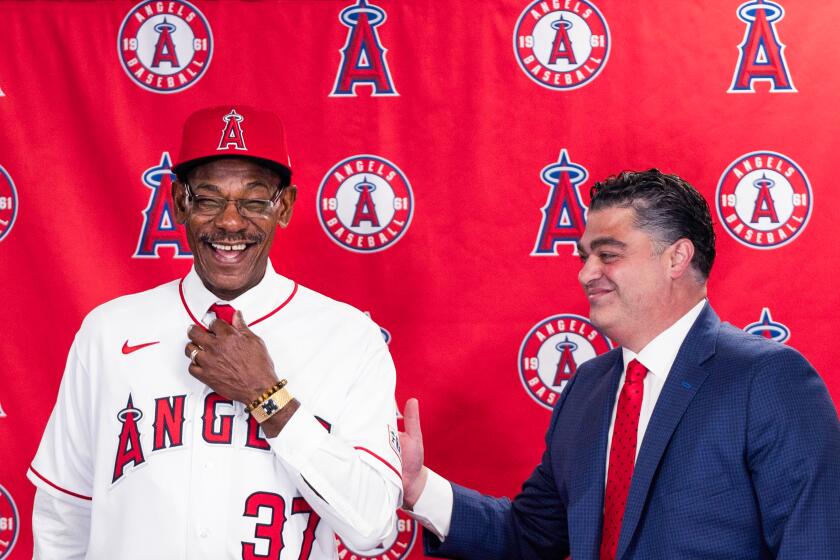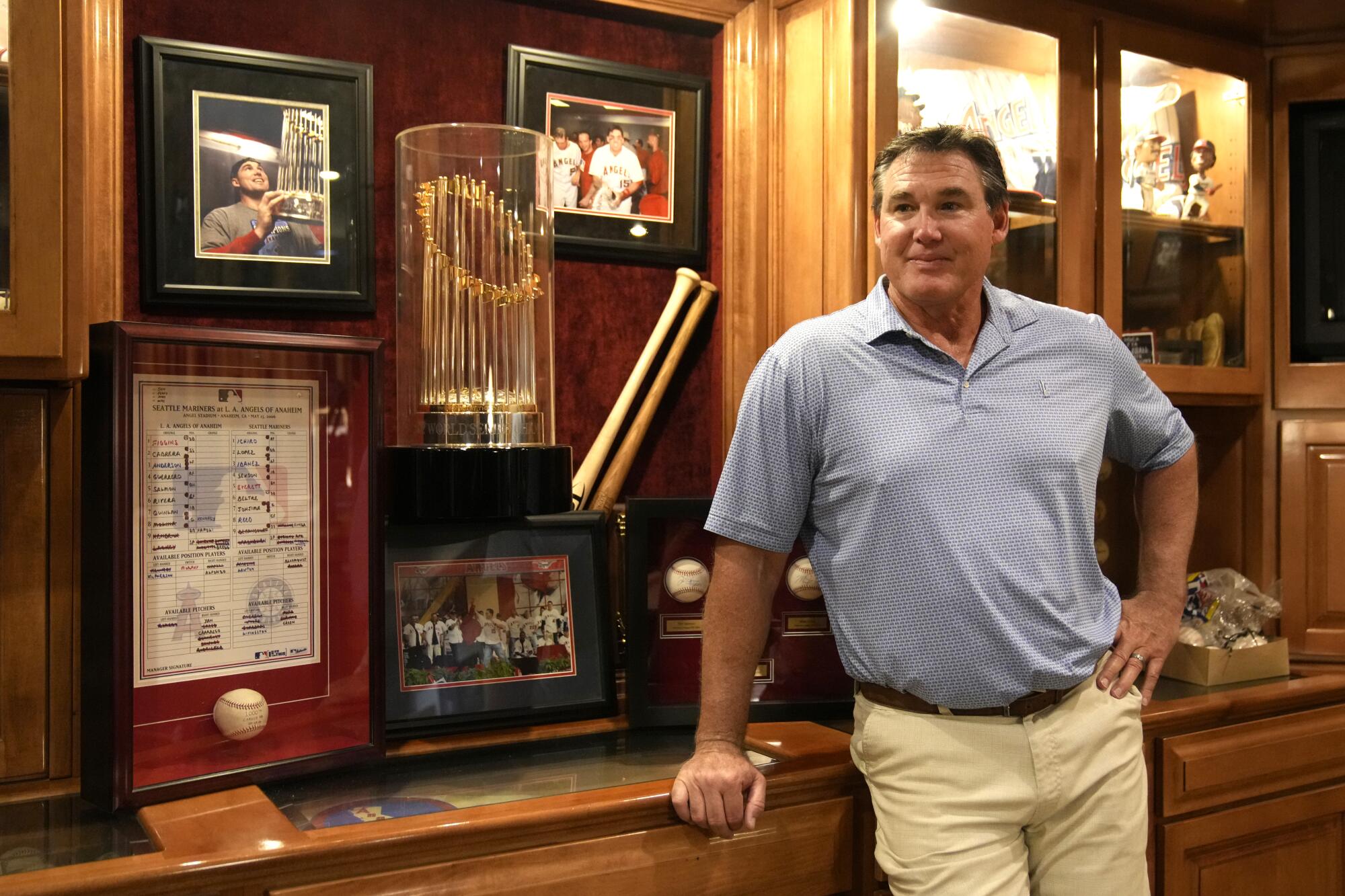
- Share via
SCOTTSDALE, Ariz. — The usual throng of 25 to 30 family members and friends will gather in Tim and Marci Salmon’s spacious Santa Barbara-style home in the tony Equestrian Manor enclave of this desert city on Thursday for a Thanksgiving feast.
Tim, the former Angels slugger who helped the franchise win its only World Series title in 2002, will cook and carve four turkeys — two in the smoker, one in the deep fryer, one in the oven — while Marci, his wife of 34 years, will decorate the house and organize who brings what salads, side dishes and desserts.
Salmon, a part-time Angels television analyst, will say grace, and each guest will be asked to say something they’re thankful for, a holiday tradition that can be perfunctory for many families but one Marci “is really good about making meaningful,” Tim said.
Those simple expressions of gratitude will hold even more significance for the Salmon family after Tim shattered his left wrist last June in a freak houseboat accident that could have killed him.
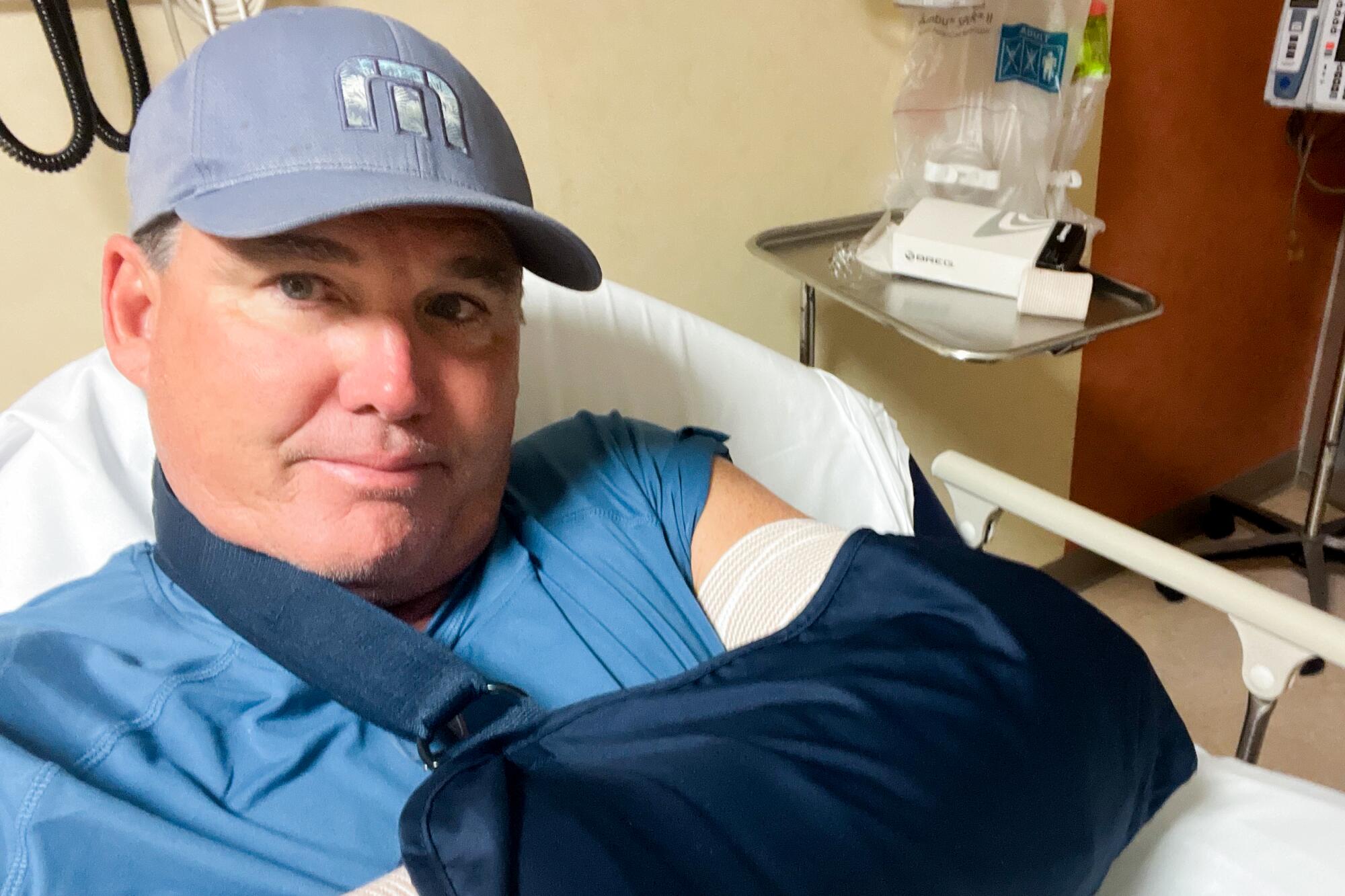

Amid the howling winds and pouring rain of a late-afternoon monsoon in a remote canyon of Lake Powell, Salmon was trying to dislodge a three-inch-thick anchor line from under the swim platform of his 24-foot wakeboard boat that was tied to the massive houseboat when the rope snapped with so much force it tossed his 6-foot-3, 245-pound body about 10 feet through the air, into the bow of the smaller boat.
Salmon’s left arm, which was perpendicular to the platform and locked at the elbow as he gripped the rope, bore the brunt of the trauma, the anchor line shooting from Salmon’s ankles toward his shoulders so rapidly that it crushed several bones in his wrist and reduced the length of his forearm by about a half-inch.
Salmon, who was hunched over the line when it snapped, shudders to think what might have happened had his arm and elbow not been as rigid as a Louisville Slugger.
“I was straining, muscling it with everything I had, so I was locked up, but if I would have been loose, my elbow would have collapsed and that rope would have come up and hit me in the face,” Salmon said. “It would have probably killed me. I mean, you take a three-inch rope snapping that quick … it could have taken my head off.”
An illustrious 14-year career — in which Salmon was named American League rookie of the year in 1993, hoisted the World Series trophy above his head for a victory lap around Angel Stadium after a Game 7 win over the San Francisco Giants in 2002 and was inducted into the team’s Hall of Fame in 2015 — ended with a whimper.
Salmon missed all of 2005 because of shoulder and knee surgeries and retired after a 2006 season in which the clearly diminished right fielder, then 37, was limited to nine homers and 27 RBIs in 76 games. He finished with a .282 career average, .811 on-base-plus-slugging percentage, 299 homers and 1,016 RBIs.
But that lost year gave Salmon the chance to do something he hadn’t done since the Angels drafted him in the third round out of Grand Canyon University in Phoenix in 1989: take a summer vacation with his wife and four kids, Callie, Jacob and fraternal twins Katelyn and Ryan, who were between the ages of 12 and 6 at the time.
The Angels have a new manager, but the burdensome contracts of Anthony Rendon and Mike Trout are why they still have major problems.
“Being a baseball player since you’re 8 years old, you never really had a summer,” said Salmon, now 55. “Growing up, especially here, you always hear stories about people going out to the lake with their families and friends, and we just never got to do it.
“That year I had my knee and shoulder done was the first year we went houseboating. We just rented some little cheap thing, and the family loved it. I was like, ‘All right, we’re doing this from here on out,’ and it’s been our family vacation since 2005.”
Callie, who owns a wedding florist company in San Diego and was married on Friday, is now 30; Jacob, a Phoenix geologist who is engaged to be married next April, is 27, and Katelyn, a graphic designer for a Phoenix-area resort, and Ryan, a Navy gunner’s mate stationed in Norfolk, Va., are 23.
But no matter where life has taken the kids, they never have missed a summer houseboat trip with their parents on Lake Powell, the picturesque Colorado River reservoir that straddles the Arizona-Utah state line, just north of the Grand Canyon.
“One year we were planning a trip to Europe, and one of the kids was like, ‘Wait, we’re not giving up our Lake Powell trip, are we?’” Salmon said. “My kids bring their friends. They go wake-surfing. It’s eight or nine days off the grid. No cellphones. We play a lot of games. It’s great family time.”
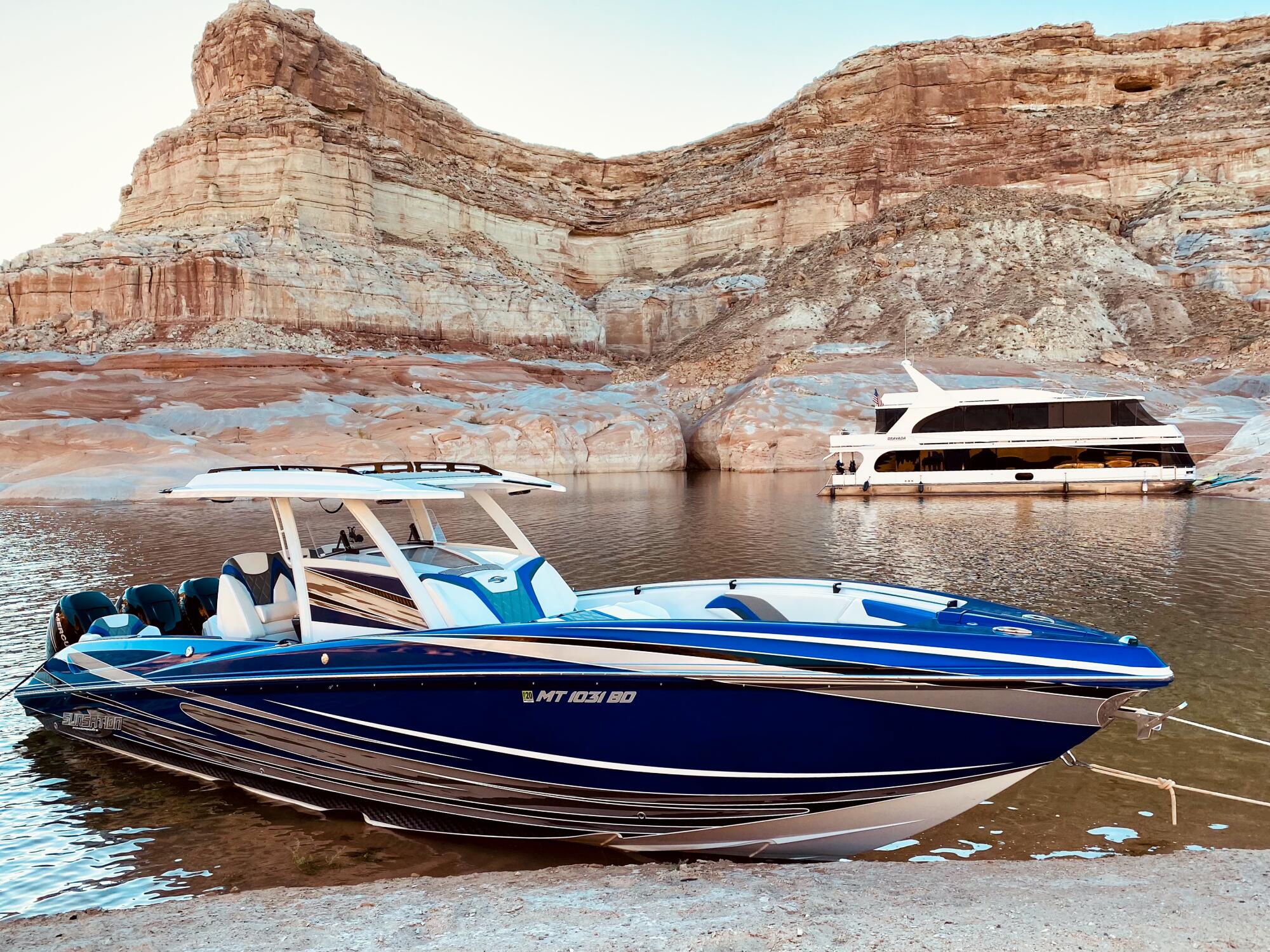
After owning timeshares of smaller houseboats for a decade, Salmon purchased one-ninth of an Adonia luxury houseboat in 2015. The $2-million, two-story vessel is 75 feet long and 22 feet wide, with seven bedrooms and five bathrooms. Salmon has use of the boat for 10 days in mid-June every year and for two or three additional weekends.
“You anchor in these canyons and obscure back fingers of the lake, and if you find the right place, there’s nobody around, and you wake up to these glorious sunrises and end the day with these amazing sunsets,” Salmon said.
“Depending where you’re at, you can go hiking from your boat. You can pull up to a beach and set up a volleyball court. The kids get out and play and explore. And those canyon walls … there’s nothing better at the end of the day than just sitting on the deck, having a cocktail and watching the colors of the rock change.”
Such pleasure comes with a price, much of it happily incurred by Salmon, who approached boating like he did baseball, with a keen eye toward preparation and repetition and a heavy emphasis on safety. Salmon not only serves as captain of the boat; he is known affectionately as “Sarge” to his fellow shipmates.
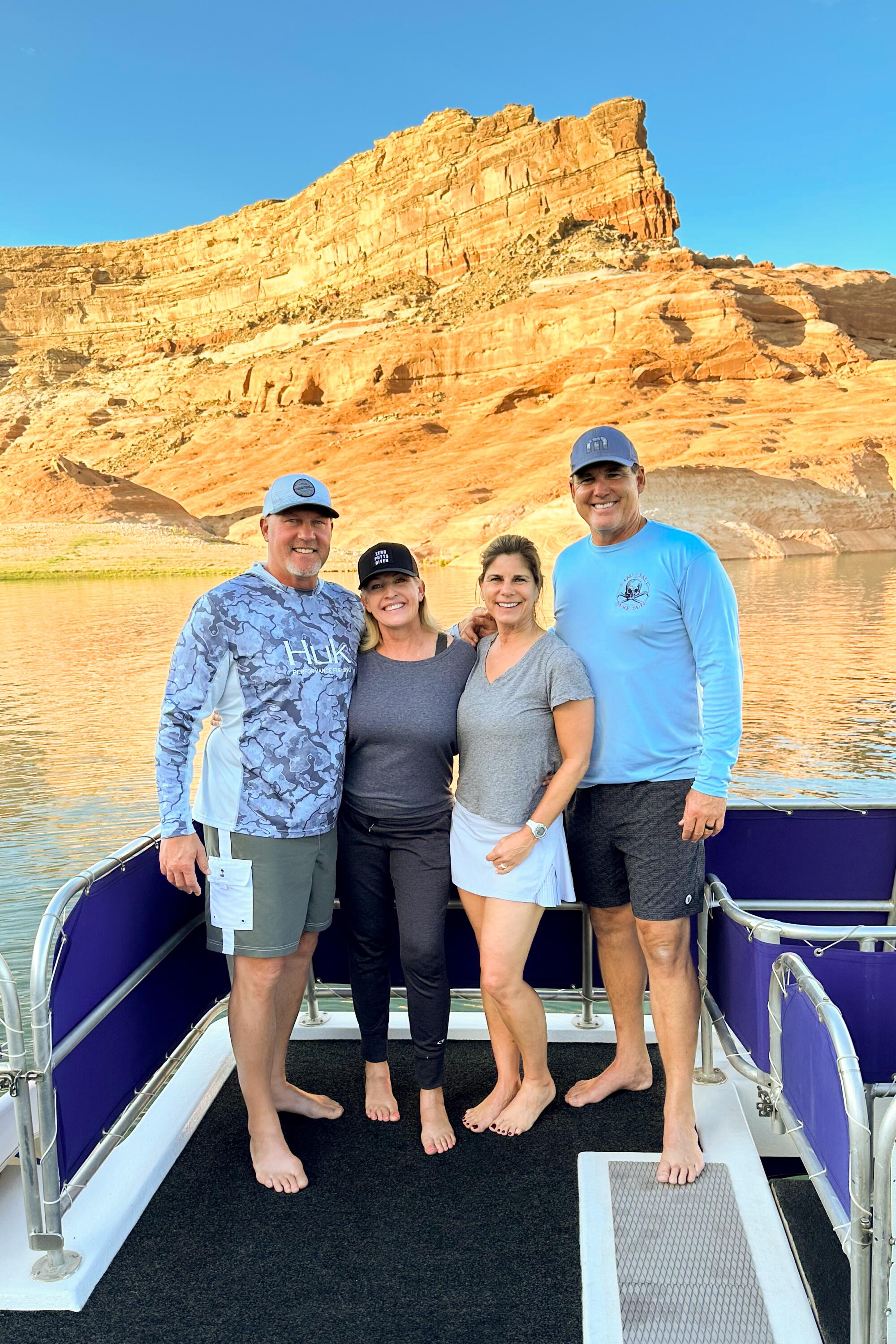
“I’m so anal about safety that I get teased about it,” Salmon said. “We have our safety talk the first night: ‘Here’s the rules of the boat. Know where your life vest is all the time. Go to bed with it because monsoons can come in the middle of the night, and we gotta roll.’ Everybody’s looking at me like, ‘OK, that sounds like such overkill.’”
Lake Powell averages about eight fatalities a year, according to a Journal of Travel Medicine study, with boating and swimming accidents accounting for a large percentage of them.
But monsoons, which have capsized boats even larger than Salmon’s, are the biggest concern, the storms producing high winds and heavy rains and spawning microbursts that can generate sudden, tornado-like gusts of 75 to 80 mph.
“I’ve gone through a monsoon situation so many times in my head, I’ve run through so many different scenarios and how to handle it, where to put people and where to not put people,” Salmon said.
“Every year we go houseboating, it’s always the same time, in mid-June, so we usually miss monsoon season. Over the years, we’ve had a couple of instances where we hit them … but nothing like this one. This was a scenario I had never even thought of.”
Salmon’s houseboat — with a 34-foot center-console boat and the wakeboard boat in tow — left the Antelope Point Marina in Northern Arizona under clear and calm skies on Friday, June 16, cruised an hour northeast into Southern Utah and into Last Chance Bay and snaked its way into the northernmost finger canyon off the bay.
Aboard were Tim and Marci and their kids, three other couples, including longtime family friends Ken and Pam Reaser, who were on their 10th houseboat trip with the Salmons, and six other adult children.
The pilot Salmon hired maneuvered the houseboat toward the beach, positioning the bow 10 to 15 feet over land and perpendicular to the shore. A crew secured six three-inch-thick, 100-foot-long ropes from the rear and back sides of the houseboat to huge, water-filled, beach-bag anchors on the shore.
“We had a little bit of a monsoon that night,” Salmon said, “and the next day it was beautiful.”
Reaser, a retired advertising agency executive whose son, Robert, played Little League and high school baseball with Jacob Salmon, had brought his Starlink satellite phone on this trip for the first time, and he and Salmon spent part of that Saturday cruising the channel in the center-console boat looking for service.
Some dark clouds began to form. A storm was rolling in. Salmon and Reaser returned to the houseboat to make sure it was secured tightly to shore. The wakeboard boat was tied to the back side of the houseboat, parallel to the bigger boat, the anchor lines from the houseboat running about six feet above the smaller vessel.
“We came inside at about 4 p.m., and Tim said, ‘I’m beat, I’m gonna take a nap,’” Reaser, 59, said by phone from his home in Whitefish, Mont. “I sat on the couch relaxing, and a few minutes later, we heard this loud thump on the deck above us.
Angels two-way star Shohei Ohtani is the unanimous American League MVP for the second time in three seasons. He finished second in 2022.
“Right then, the boat started moving. The water was coming up. One of our anchor lines started to loosen, and the boat started to rotate. I was like, ‘Oh, crap.’”
Salmon had some scary moments on the baseball field, the worst coming in 1990 on a hot desert night at class-A Palm Springs, when a high-and-tight fastball shattered his jaw, temporarily disfiguring his face to such an extent that his younger brother, Mike, said it “looked like a hand grenade went off in his mouth.”
But the next 25 minutes would be among the most harrowing of Salmon’s life, the chaos and confusion of which is best captured by the two voices at the center of the storm.
Salmon: “I was in bed for about five minutes when I heard this ‘Boom!’ I’m like, ‘What was that?’ I jumped out of bed, and my buddy said, ‘Yeah, the wind must have kicked up.’ I ran downstairs, and my kids were like, ‘Dad, we’re sideways in the boat!’
Reaser: “Those microbursts hit hard, and things went from very quiet to very chaotic very quickly. ... The winds were whipping up bad.”
Salmon: “The [anchor] lines on one side of the boat were unspooled and came loose, and when that happens, you go into action. You start the motors, clear off the back deck, make sure there are no lines in the water … but there’s this monsoon going on.”
Reaser: “We were kicking off to our left, so we ran the left engine harder than the right, trying to propel us back onto the shore. Tim grabbed some of the boys, assigned them tasks, and they were scrambling around, trying to get the lines tightened up.”
Salmon: “We got the boat squared up and thought we were good to go, and somebody said, ‘Hey, what’s going on with your [wakeboard] boat?’ The anchor lines were tight, but one was drooping in the water. It had caught the back corner of the [wakeboard] boat and was lifting it out of the water. It looked like it might break the swim platform.
“The line only had to be moved six inches, so I told Ken, ‘There’s a winch button on the helm. I’m gonna run back there, you release the winch and the line, and I’ll move it off.’”

Reaser: “I confirmed with Tim which winch switch it was. I said, ‘One more time, which way tightens [the line] and which way loosens it?’”
Salmon: “The winch isn’t labeled in or out. It’s a toggle switch. I had been hitting it in one direction to tighten the lines, and in the chaos of running back and forth, I told him to go in the same direction I’d been going to tighten. I just wasn’t thinking clearly. He did exactly what I told him to do.”
Reaser: “I’m in the front of the boat and I can’t see or hear Tim, so Marci stood in the main room, where she could see him and signal me what to do. Tim said to loosen the rope, so I hit the button, and she said, ‘No! No! Wrong direction!’ I actually tightened it.”
Salmon: “It dawned on me that he’s tightening the line. I said to hit it in the other direction. As he took the tension off, I was the dummy still holding the line, trying to move it.”
Reaser: “I felt horrible because I was the one tightening the rope. As I loosened it, Tim was down there trying to push it out.”
Salmon: “There was so much tension on the rope, you could almost hear it singing — they talk about that with tight anchor lines. It felt like I was grabbing a pole. As Ken let the line out, I could start to move it, and as soon as it cleared, it was like a rubber band, a bow-and-arrow. It shot from my feet to my chest instantaneously.
“I was leaning over with my arm stiff, so when it snapped, the force went right through me and launched me about 10 feet back into the chair of my [wakeboard] boat. I’m in the air and I’m going, ‘Oh my gosh, what just happened?’ My wrist is flopping. It was like slow motion. It was crazy. Everybody who saw it was freaking out.”
Reaser: “Marci cried out, ‘He’s hurt! He’s hurt!’ I ran to the back of the boat, and I could see Tim hunched over with his arm up against him. Tim’s a tough guy, right? He’s clearly in pain. And I don’t know if this was divine intervention, but we had just managed to get the Starlink up and running, so we could call for help.”
Salmon was transported on a pontoon boat through darkness back to the marina and taken to the emergency room at Page (Ariz.) Hospital, where X-rays showed a compression fracture of the distal radius, a common injury for people bracing themselves from a fall.
As medication dulled a pain that Salmon described as “off the charts, a 10,” he lay in the hospital bed, replaying over and over again the chain of events that got him there.
“In these chaotic situations, there’s probably 10 things that, as an experienced captain, you have to be mindful of, and I made nine out of 10 decisions right,” Salmon said. “We got the boat squared away. We were under control. Then somebody noticed the line in the water, and I was like, ‘Oh, I didn’t see that coming.’
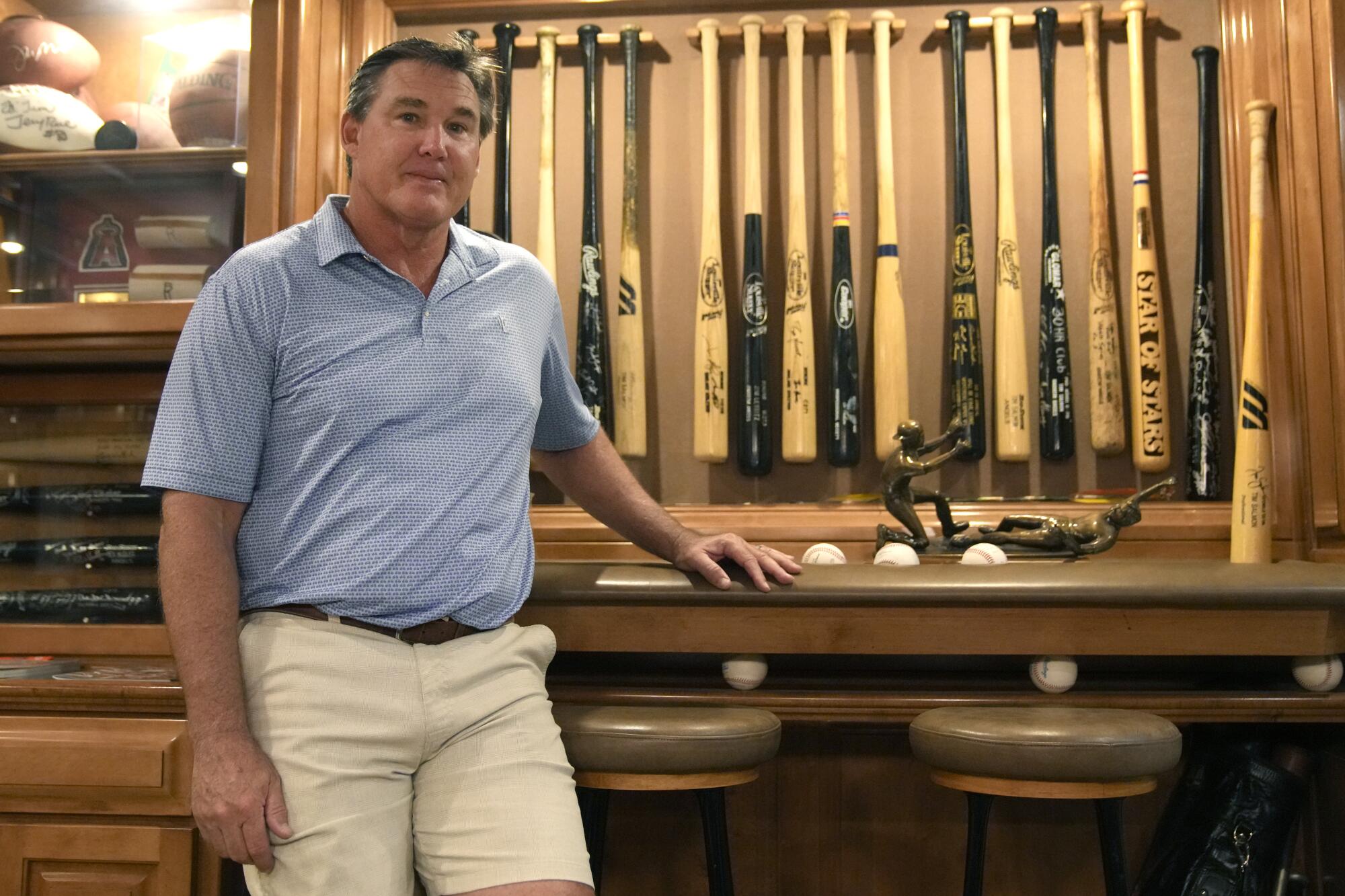
“In hindsight, I should have stepped away from everything, let him totally release the line, let it go slack in the water and slide it over the top [of the swim platform]. But when the wind is blowing and you’re in the middle of a storm, the last thing you want to do is release tension on lines that are holding you tight.”
Former Angels teammate and Arizona pitching coach Mike Butcher referred Salmon to Dr. Marc Dinowitz, an orthopedic hand specialist who works with the Diamondbacks.
Five days after the accident, Salmon underwent surgery in which Dinowitz reinforced the wrist bone with a 2½-inch titanium plate and eight screws. A six-to-nine-month recovery process began with range-of-motion exercises and physical therapy.
Salmon returned to work on Angels telecasts within two weeks. He was able to hit ground balls by late September, at the end of a monthlong stint as an Angels guest coach that could lead to an expanded on-field role next season. He played golf for the first time in late October.
“I’m probably 95% now,” Salmon said. “It’s sore, and I feel some weakness with some workouts, but I’m going to be fine.”
Salmon also recovered emotionally from the accident, but he did experience post-traumatic-stress-like symptoms for weeks.
“I’d break out in a sweat in the middle of the night thinking, ‘Oh my gosh, what if that was Ryan or Jacob in my position?’” Salmon said. “My boys would typically jump into that kind of action, but they were tied up [in the engine room of the houseboat].
“If one of them was on that rope, who knows if they would have had the strength to keep their arm straight? Can you imagine that happening to one of your kids? How do you go houseboating ever again if you lose one of your children on a trip?”
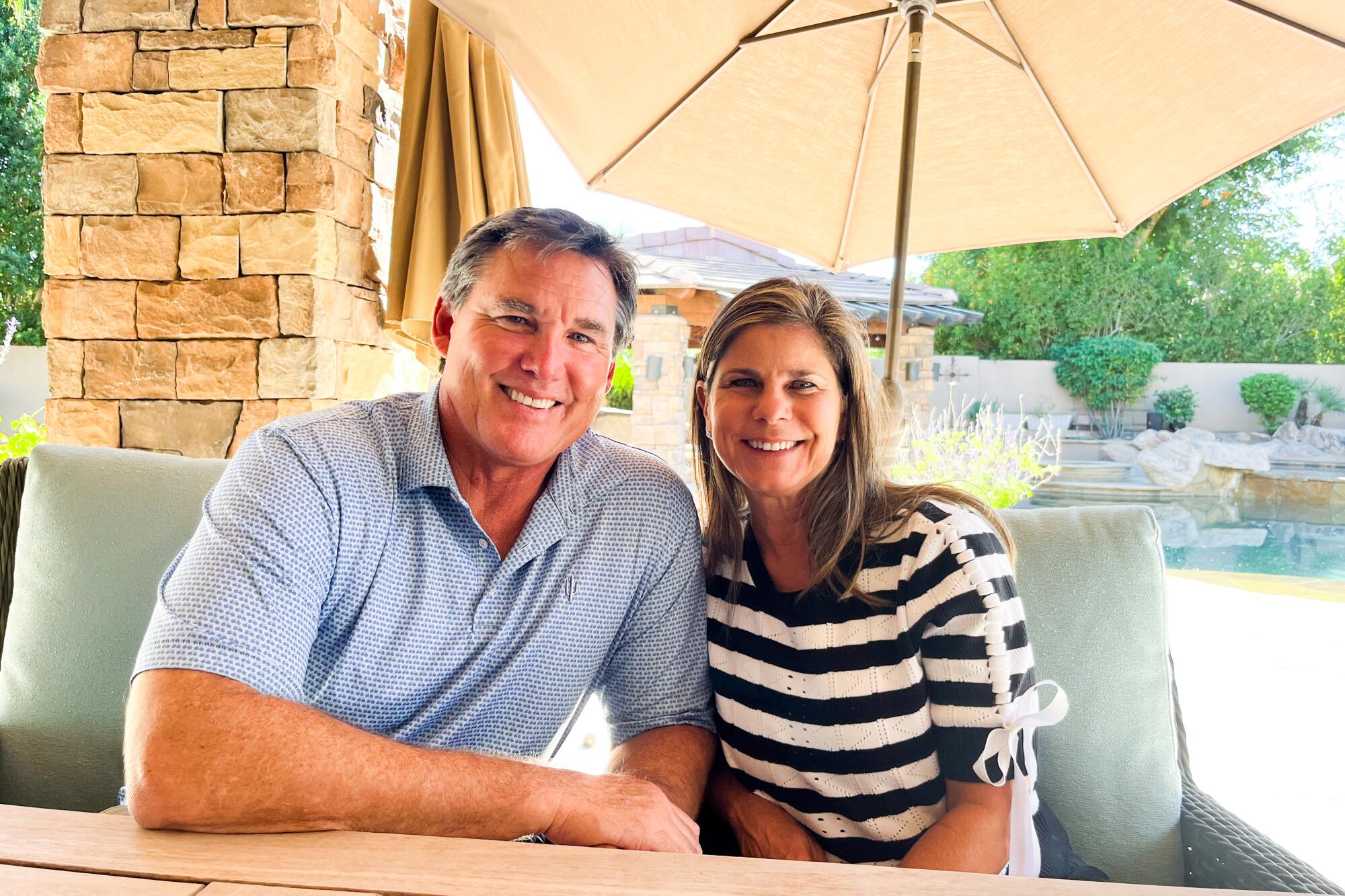
The loss of Salmon would have been equally tragic, robbing the family of its patriarch, its captain, its husband, its father and — Tim and Marci hope — future grandfather.
“Life can change in a minute — I’m very mindful of that,” Salmon said. “I [got] to walk my daughter down the aisle. I mean, think about that. The year she gets married, what if her dad died? So yeah, I count my blessings every single day. We don’t take our gratitude for granted.”
More to Read
Go beyond the scoreboard
Get the latest on L.A.'s teams in the daily Sports Report newsletter.
You may occasionally receive promotional content from the Los Angeles Times.

